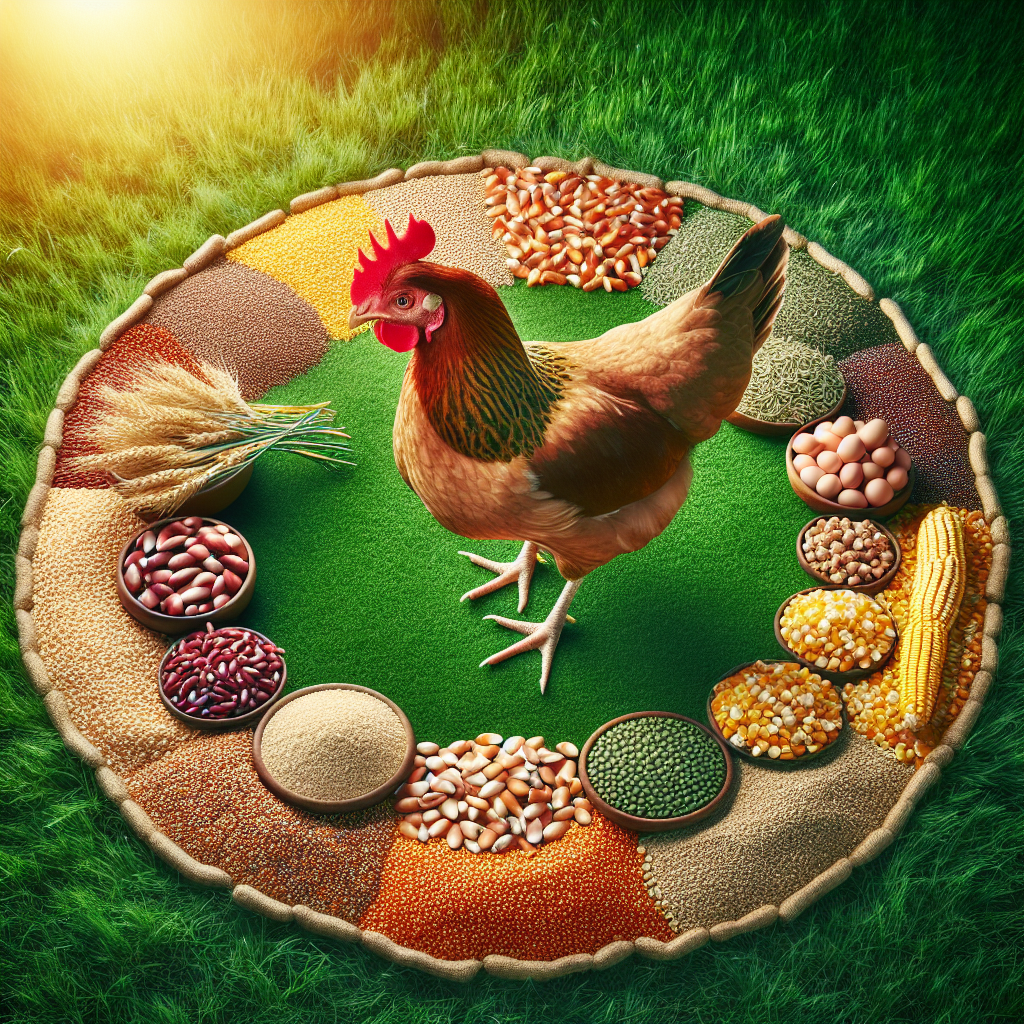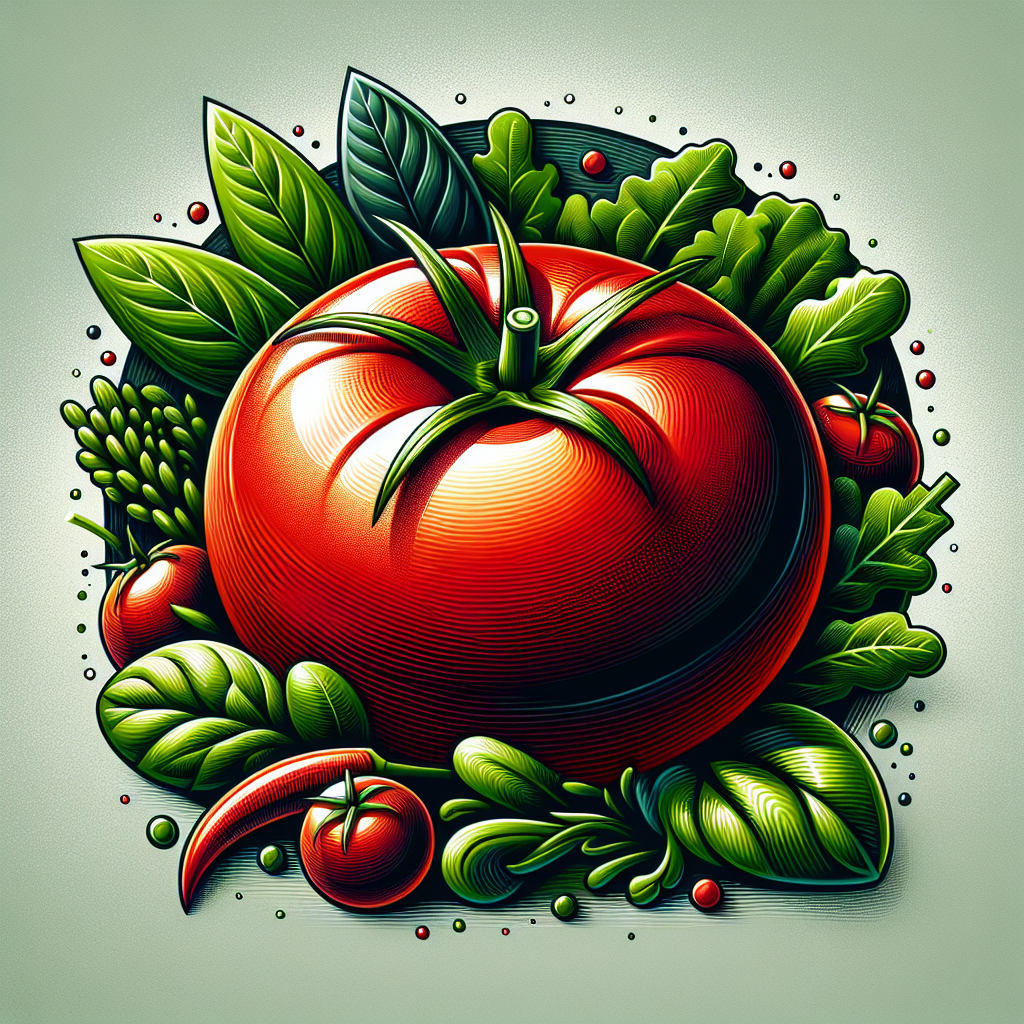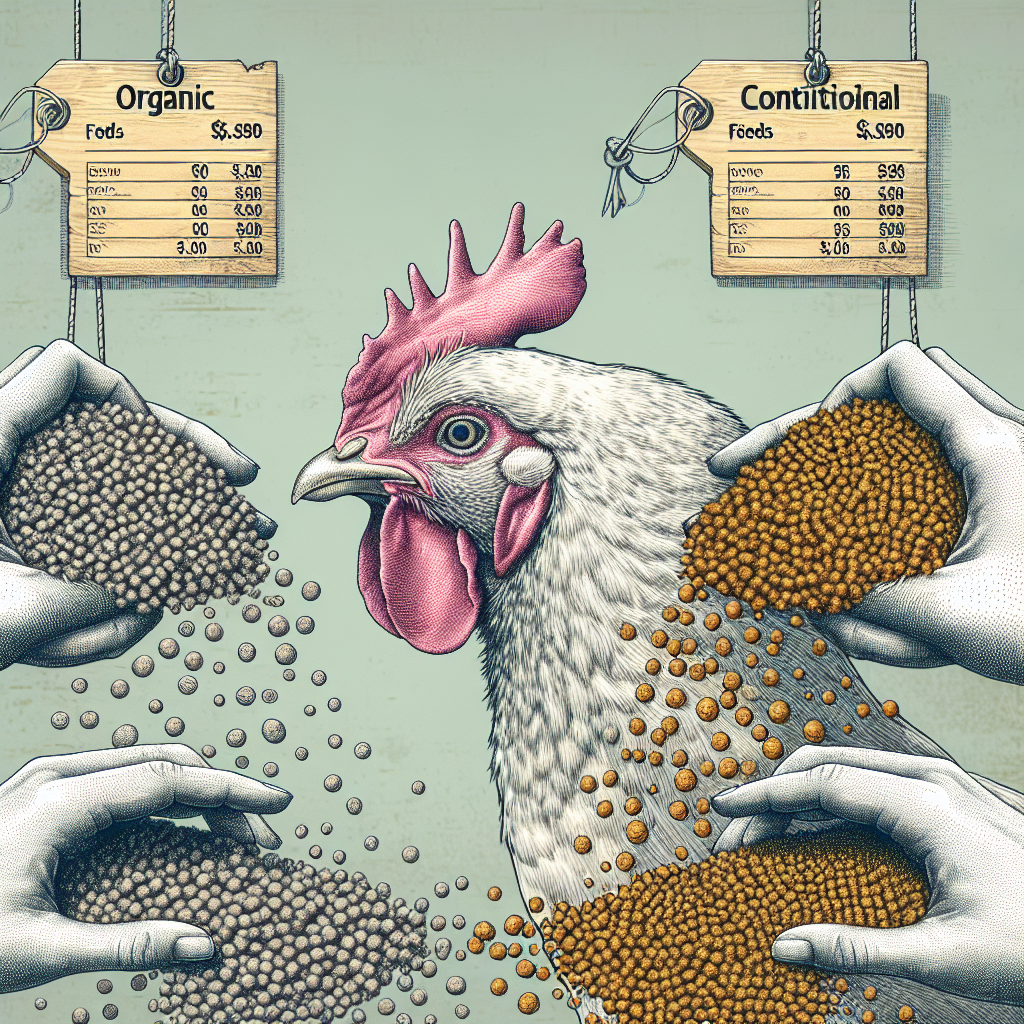In the world of poultry farming, the question of whether there are concerns regarding pesticides or chemicals in non-organic chicken feeds often arises. Many farmers and consumers alike are becoming increasingly conscious of the potential health risks associated with these additives in the food chain. This article will explore the various factors and considerations surrounding the use of pesticides and chemicals in non-organic chicken feeds, shedding light on the potential implications for both chickens and those who consume their meat. Discover the potential concerns and gain a clearer understanding of the impact these additives may have on our food supply.
Overview of chicken feeds
Types of chicken feeds
When it comes to poultry farming, the type of feed given to chickens plays a crucial role in their overall health, growth, and productivity. There are several types of chicken feeds available in the market, each designed to cater to specific needs at different stages of a chicken’s life. These feeds include starter feeds for chicks, grower feeds for adolescent chickens, layer feeds for laying hens, and finisher feeds for chickens nearing the end of their production cycle.
Role of chicken feeds in poultry farming
Chicken feeds serve as a complete and balanced source of nutrition for chickens. They provide the necessary energy, protein, vitamins, and minerals required for growth, egg production, and overall health. A well-formulated feed helps chickens develop strong bones, feathers, and muscles, and ensures optimal egg quality and quantity. Different feeds are formulated to meet the specific nutritional requirements of chickens at different stages of their life cycle, ensuring that they receive the nutrients they need to thrive.
Importance of feed quality in chicken production
The quality of chicken feed is of utmost importance in poultry farming. High-quality feeds not only ensure optimal growth, health, and productivity in chickens but also contribute to overall farm profitability. Poorly formulated or contaminated feeds can lead to stunted growth, reduced egg production, and increased susceptibility to diseases. It is essential for poultry farmers to source feeds from reliable suppliers and monitor feed quality to maintain the health and well-being of their flock.
Non-organic chicken feeds
Definition and composition of non-organic chicken feeds
Non-organic chicken feeds are those that are composed of ingredients that have been conventionally grown or produced, without adhering to organic farming practices. These feeds commonly contain ingredients such as corn, soybean meal, wheat, barley, and various other grains, which are often sourced from conventional farming operations.
Common ingredients in non-organic chicken feeds
Non-organic chicken feeds typically contain a combination of grains, protein sources, and other additives. Grains like corn and wheat provide carbohydrates, while protein sources like soybean meal and fish meal contribute to the protein content. Other additives may include vitamins and minerals, growth promotants, and synthetic amino acids.
Benefits and drawbacks of non-organic feeds
Non-organic chicken feeds come with their own set of benefits and drawbacks. The use of conventional ingredients in these feeds often makes them more affordable and readily available than their organic counterparts. Additionally, the composition of non-organic feeds can be more precisely formulated to meet specific nutritional requirements. However, the use of pesticides, chemicals, and synthetic additives in non-organic feeds raises concerns about potential health and environmental impacts, both for the chickens consuming the feed and the ecosystem as a whole.
Pesticides in non-organic chicken feeds
Potential sources of pesticides in feeds
Pesticides can enter non-organic chicken feeds through various sources. One common source is the agricultural practices used in the cultivation of feed ingredients. Pesticides may be applied directly to crops to control pests, weeds, and diseases, and these residues can be transferred to the final feed product. Additionally, cross-contamination can occur during the transportation and storage of feed ingredients, where pesticides from other sources may come into contact with the feed.
Health and environmental concerns
The presence of pesticides in non-organic chicken feeds raises concerns about potential health effects on chickens and the environment. Pesticides are designed to kill or control pests, and their residues in feed can potentially have adverse effects on chickens’ health, including decreased growth, reproductive issues, and increased susceptibility to diseases. Moreover, these chemical residues can also pose risks to ecosystems, as they may contaminate soil, water, and wildlife, leading to long-term environmental damage.
Regulations and safety standards
To ensure the safety of animal feed, regulatory bodies and safety standards have been established in many countries. These regulations set maximum residue limits (MRLs) for pesticides in animal feed, including chicken feeds. Feed manufacturers and suppliers are required to comply with these standards, conducting regular testing and monitoring to ensure that their products meet the established safety requirements. Proper adherence to these regulations and standards is vital for minimizing the potential risks associated with pesticides in non-organic chicken feeds.
Chemicals in non-organic chicken feeds
Types of chemicals found in feeds
In addition to pesticides, non-organic chicken feeds may contain various other chemicals, such as synthetic additives, preservatives, and artificial colorants. These chemicals are commonly used in the production and processing of feeds to improve their quality, appearance, and shelf life. While these additives are generally recognized as safe for consumption, their long-term effects on chicken health and the quality of chicken products are still a subject of ongoing research and debate.
Potential risks and health effects on chickens
The presence of chemicals in non-organic chicken feeds raises concerns about potential risks and health effects on chickens. Some studies suggest that certain synthetic additives used in feeds may have negative impacts on chickens’ growth, reproductive performance, and immune system function. It is important for poultry farmers to be aware of the potential risks associated with these chemicals and consider their impact on the overall health and well-being of their flock.
Contamination and residue levels
Chemical contamination in non-organic chicken feeds can occur due to various factors, including the quality of the raw ingredients, feed processing practices, and cross-contamination during storage and transportation. Residue levels of these chemicals in chicken feeds should be carefully monitored to ensure they do not exceed the established safety standards. Periodic testing and analysis of feed samples are necessary to identify and address any potential contamination issues, thereby safeguarding the health of the chickens consuming the feed.
Impacts on chicken and consumer health
Transfer of pesticides and chemicals to chicken meat and eggs
The presence of pesticides and chemicals in non-organic chicken feeds raises concerns about their potential transfer to chicken meat and eggs. When chickens consume feed that contains these substances, residues can accumulate in their tissues and subsequently be passed on to consumers through the consumption of chicken products. Understanding the extent of transfer and the potential health risks associated with these residues is crucial for ensuring food safety and consumer confidence.
Potential risks to human health and food safety
Consumers may be exposed to pesticides and chemicals through the consumption of chicken meat and eggs. The ingestion of these chemical residues, even at low levels, can potentially have adverse health effects on humans, including acute toxicity, carcinogenicity, and endocrine disruption. It is important for regulatory bodies to establish and enforce safety limits for pesticide and chemical residues in chicken products to minimize the potential risks to human health and ensure food safety.
Evaluating the long-term effects
Assessing the long-term effects of pesticide and chemical exposure from non-organic chicken feeds on both chicken and human health is a complex task. Longitudinal studies and comprehensive research are needed to fully understand the potential impacts, considering factors such as cumulative exposure, interactions between different chemicals, and individual susceptibility. Continued monitoring and evaluation of feed and food safety standards are essential to mitigate any potential long-term risks.
Alternatives to non-organic chicken feeds
Organic chicken feeds
Organic chicken feeds offer an alternative to non-organic feeds, focusing on natural and sustainable farming practices. These feeds are made from organic ingredients that are grown without the use of synthetic pesticides, genetically modified organisms (GMOs), and synthetic additives. Organic feeds prioritize the use of natural and organic methods to maintain the health and well-being of the chickens and avoid potential adverse effects associated with the use of pesticides and chemicals in conventional feeds.
Benefits of organic feeds
Organic chicken feeds provide several benefits for both chickens and the environment. They offer a natural source of nutrition, free from synthetic additives and potentially harmful residues. Organic farming practices promote biodiversity, soil fertility, and sustainable land use, reducing the negative impacts on ecosystems. Additionally, organic chicken products are sought after by consumers who prioritize organic and sustainable choices.
Transitioning to organic feeds – challenges and solutions
Transitioning from non-organic to organic feeds presents certain challenges for poultry farmers. Organic feeds can be more expensive and less readily available compared to conventional feeds. Additionally, the transition process may require adjustments in farm management practices and compliance with organic farming regulations. However, with proper planning, understanding of organic farming principles, and support from organic feed suppliers and industry organizations, farmers can successfully overcome these challenges and make a positive transition to organic feeds.
Safety measures and quality control
Feed sourcing and supplier practices
Ensuring the safety and quality of chicken feeds begins with careful selection and sourcing of feed ingredients and suppliers. Poultry farmers should conduct thorough research on feed suppliers, considering their reputation, compliance with safety standards, and commitment to quality control. Regular communication and collaboration with suppliers can help ensure transparency and accountability in the sourcing and handling of feed ingredients.
Testing and monitoring for pesticide and chemical residues
To maintain feed quality and safety, regular testing and monitoring for pesticide and chemical residues should be implemented. Feed manufacturers should conduct periodic analysis of feed samples to ensure that residue levels are within acceptable limits. This monitoring process should cover all stages, from the sourcing and processing of raw ingredients to the final feed product. Testing should be performed by accredited laboratories following recognized methods and standards.
Regulatory bodies and industry certifications
Regulatory bodies play a crucial role in setting safety standards and monitoring compliance in the poultry feed industry. They establish guidelines and regulations to protect animal health, food safety, and the environment. Industry certifications, such as the Good Manufacturing Practices (GMP) certification, can also help ensure that feed manufacturers adhere to quality control measures and meet the required safety standards. Compliance with these regulations and certifications provides assurance to poultry farmers and consumers regarding the safety and quality of chicken feeds.
Preventing contamination on farms
Best practices for storage and handling of feeds
Preventing contamination of chicken feeds begins with proper storage and handling practices on the farm. Feed should be stored in clean, dry, and well-ventilated areas to prevent the growth of mold and the attraction of pests. It is important to regularly inspect storage facilities for any signs of damage or pest infestation and address them promptly. Implementing a rotation system to ensure the use of older feed batches first can help prevent spoilage and maintain feed freshness.
Integrated pest management strategies
Integrated Pest Management (IPM) strategies can help minimize the use of pesticides and chemicals on poultry farms. By implementing preventative measures such as proper waste management, regular cleaning and disinfection, and maintaining a clean and hygienic farm environment, the risk of pest infestation can be reduced. Additionally, IPM techniques such as biological controls, trap cropping, and physical barriers can be employed to manage pests effectively without solely relying on chemical interventions.
Reducing chemical usage on poultry farms
Reducing the usage of chemicals on poultry farms can contribute to minimizing potential contamination risks in chicken feeds. Implementing sustainable farming practices, such as crop rotation, organic fertilization methods, and natural pest control methods, can help reduce the need for chemical inputs. By adopting environmentally friendly approaches, poultry farmers can promote a healthier and more sustainable farming system.
Consumer awareness and labeling
Understanding feed labeling and certification
Consumer awareness of feed labeling and certifications is essential for making informed choices when purchasing chicken products. Understanding the information provided on feed labels, such as the list of ingredients, nutritional analysis, and any certifications or standards met by the feed manufacturer, enables consumers to evaluate the quality and safety of the feed used in the production of chicken products. Recognized certifications like “USDA Organic” or “Non-GMO Project Verified” can provide additional assurance of the feed’s organic or genetically modified organism-free status.
Educating consumers about feed choices
Educating consumers about the impact of feed choices on animal welfare, environmental sustainability, and food safety is crucial for driving demand for sustainable and responsibly produced chicken products. Through targeted campaigns, educational materials, and outreach initiatives, consumers can be empowered to make choices that align with their values and contribute to a more sustainable food system. By promoting transparency and providing accessible information, consumers can make more informed decisions about the food they purchase and support sustainable farming practices.
Demand for transparency and sustainable practices
Consumer demand for transparency and sustainable practices in the poultry industry is increasing. Informed consumers are seeking products that meet higher standards of animal welfare, environmental protection, and ethical sourcing. This demand has prompted many companies to adopt more sustainable and responsible practices throughout their supply chains. By supporting companies that prioritize sustainable feed practices, consumers can drive positive change in the industry and contribute to a more sustainable and ethical food system.
Conclusion
In conclusion, the use of non-organic chicken feeds raises concerns regarding the potential presence of pesticides and chemicals, which can have adverse effects on both chicken and consumer health. Organic chicken feeds offer an alternative, prioritizing natural and sustainable farming practices. Transitioning to organic feeds may present challenges but can be achieved with proper planning and support. Safety measures and quality control, including careful sourcing, testing, and regulatory compliance, are crucial to ensure feed safety. Preventing contamination on farms through best practices and integrated pest management is essential. Consumer awareness and education play a vital role in promoting sustainable feed choices and driving demand for transparency in the poultry industry. By prioritizing sustainable feed practices, we can safeguard the health of chickens, consumers, and the environment, contributing to a more sustainable and ethical food system.




